

How does the currently smallest available DSLR camera, the Canon EOS 100D, perform on the microscope?
We have been eagerly waiting to get our hands on the Canon EOS 100D. Can this small camera really keep pace with the larger models when it comes to taking photographs on the microscope, or will there be drawbacks?
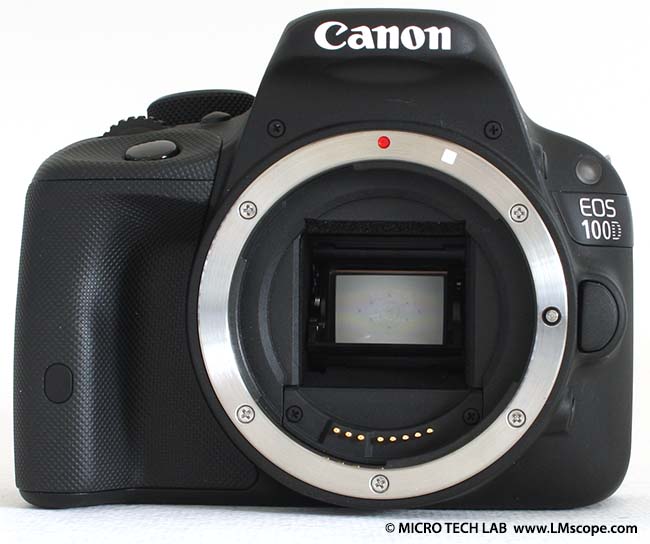
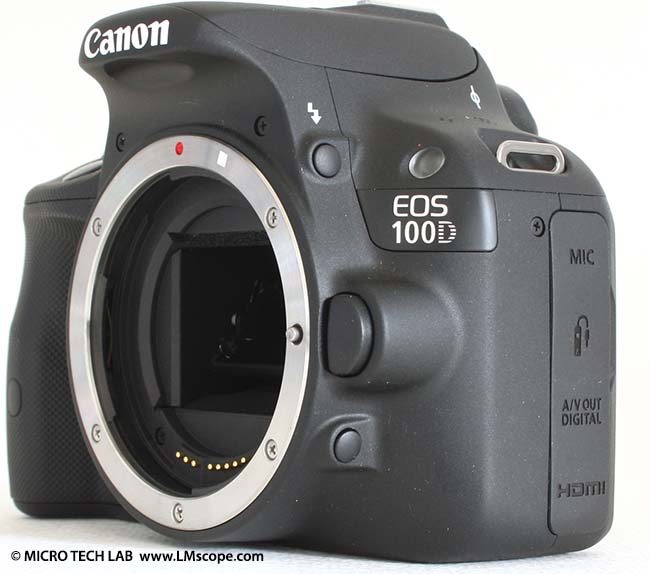
Although you already know before opening the box that the camera is small, it still comes as a surprise when you actually have it in your hands. So small, and yet still a DSLR camera! Without the lens it weighs an unbelievable 385 grams. Nevertheless, inside there is still an 18 megapixel APS-C format sensor. The low weight is due to the material used for the camera, which is primarily plastic. The price of the camera also lies at the lower end of the scale: currently (October 2013) the camera body is available for only around € 450.
The display is astonishing too; it measures three inches, has one million pixels and takes up almost the whole of the back of the camera. The operating buttons are a little small, but since we usually control the camera from the computer with the Canon remote control application and, in addition, the display is touch sensitive, this does not bother us at all. It is a shame though that the display does not swivel.
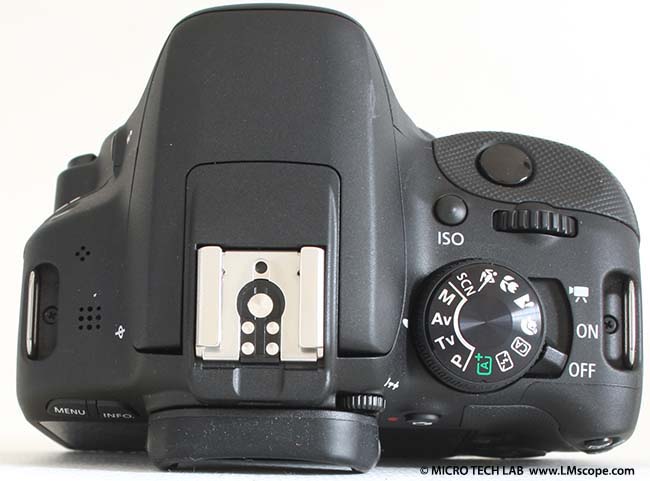
The shooting mode dial on the top of the camera is the usual size for a Canon.
Due to the size of the body, there is not a lot of space for the battery, which understandably also results in a reduced life of 380 shots or – something that is important for our needs – 150 shots in Live View mode. For intensive work with the camera, you should therefore always have a second battery pack ready, or purchase a plug-in power supply.
The camera’s ISO settings range from 100 to 6,400 in automatic mode; in manual mode, ISO can even be adjusted to 25,600. The colour depth is 42 bits.
Especially for microphotography, it is important that the Canon EOS 100D has a magnification function in Live View mode; this even works with the HDMI output.
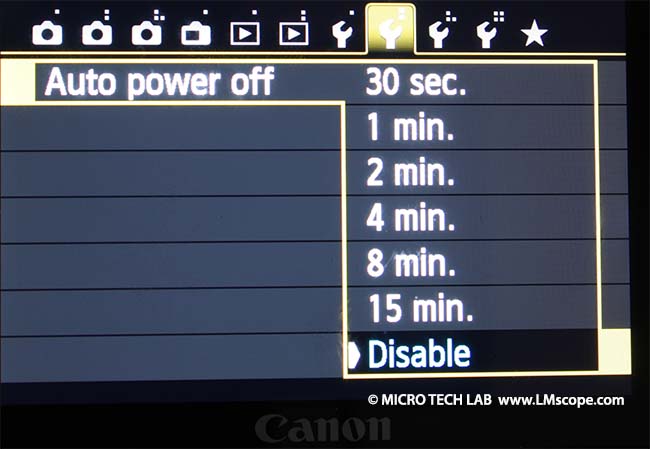
A handy feature when using the camera in Live View mode it that the length of time after which the camera will automatically turn of if it is idle can be set to at least 15 minutes. Otherwise, during lectures or when working in groups, the auto shut-off may cause irritating disruptions.
We tested the Canon EOS 100D with a microscope. The camera can be attached without any difficulty to either the phototube or the eyepiece tube. Different adapters are needed depending on the microscope connections. The adapter required for all customary microscope connections can be found via our configurator, or alternatively you can send us a direct inquiry via the contact form.
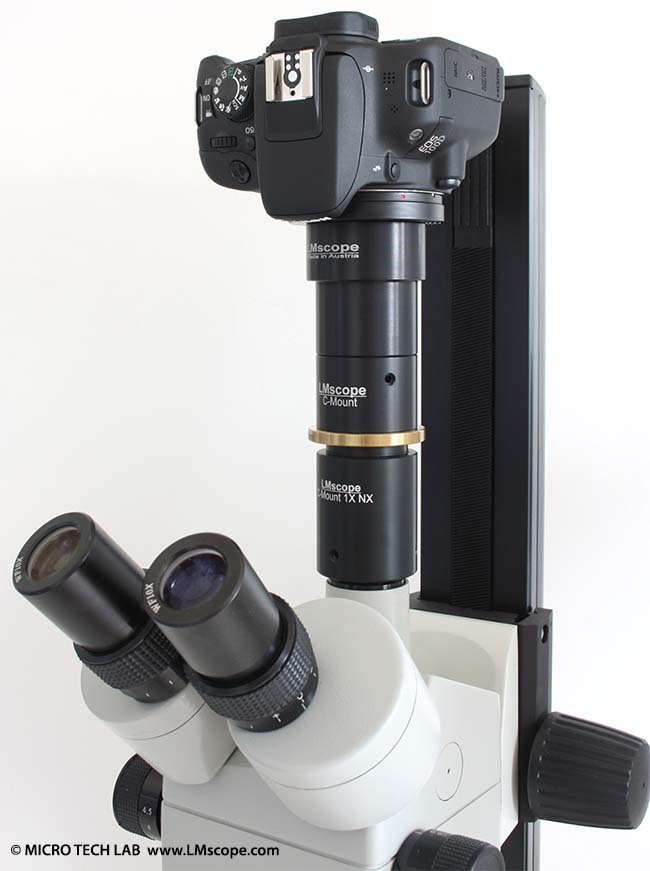
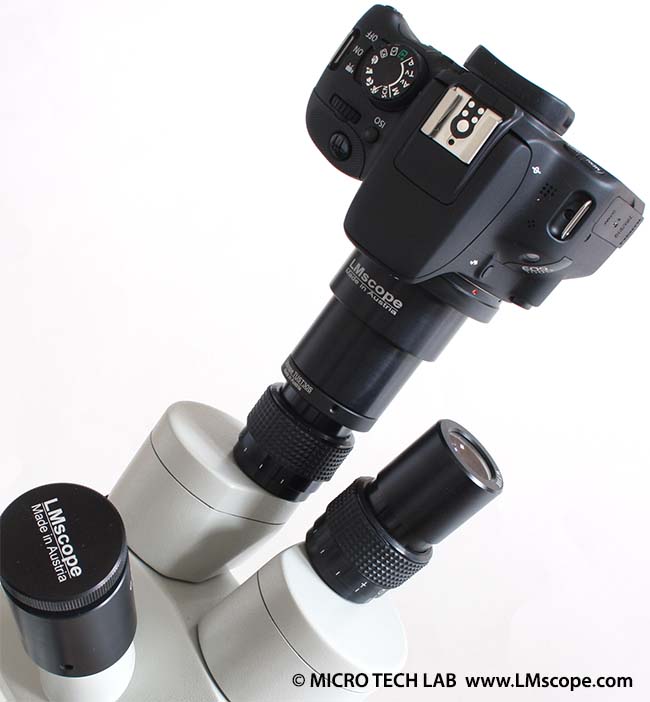
We were very satisfied with the performance of the Canon EOS 100D on the microscope. The Canon EOS remote control from the computer worked extremely well, and the image quality was very good. The low weight of the camera is especially advantageous for use on the eyepiece tube, as working with lighter microscopes and larger cameras may result in an awkward lever action on the tube.
However, we were also interested to see how the Canon EOS 100D managed on the macro stand with the LM macro 80 mm close-up lens. For this application, the Canon 18-58 mm kit lens was used, which has a 58 mm filter thread.
For many applications, the LM macro 80 mm close-up lens with the macro stand 3 is an excellent alternative to a stereo microscope. All you need to do to get to work is simply screw the close-up lens onto the existing kit lens! The magnification scale is 1.2:1 (image field 26 mm x 17 mm) full frame. This corresponds approximately to a microscope magnification of 7x.
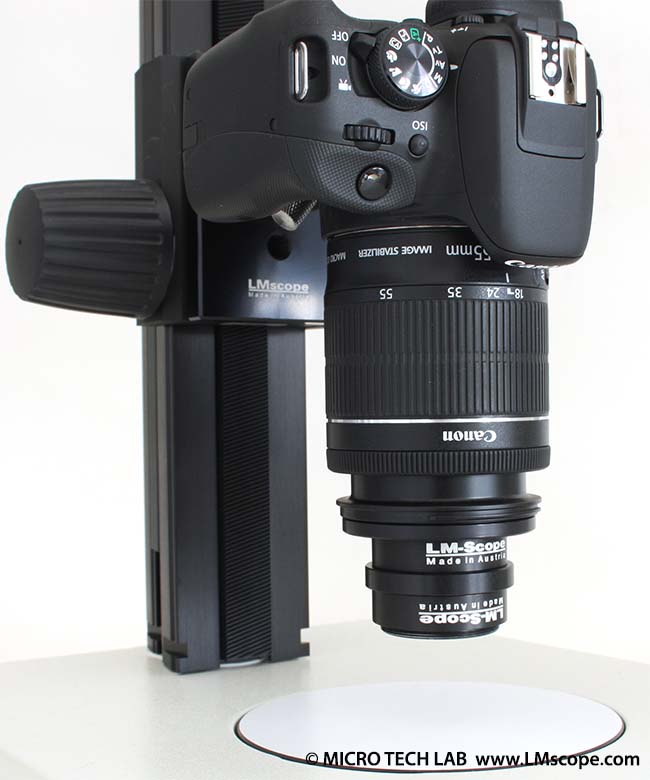
Conclusion:
The Canon EOS 100D is a good, wallet-friendly alternative to more expensive DSLR cameras. Naturally, the low weight and price mean that concessions have to be made in some areas – for example the battery capacity is very modest and the automatic shut-off time could be a little longer – but overall the camera is well worth considering.
16.12.2013
New LM Digital Adapter for: Canon EOS R3 / Canon EOS R6 Mark II / Canon EOS R8 / Canon EOS R5 II / Canon EOS R5 / Canon EOS R6 / Canon EOS R / Canon EOS Ra (Astro) / Canon EOS RP / Canon EOS R7 / Canon EOS R10 / Canon EOS 1D X Mark III / Canon EOS 1D X Mark II / Canon EOS R100 / Canon EOS 1D X / Canon EOS 90D / Canon EOS 5D Mark IV / Canon EOS 6D Mark II / Canon EOS M6 Mark II / Canon EOS 250D / Canon EOS 850D / Rebel T8i / Canon EOS 6D / Canon EOS M200 / Canon EOS 5DS R ( without low-pass filter) / Canon EOS 80D / Canon EOS M50 Mark II / Canon EOS 5DS / Canon EOS M50 / Canon EOS 70D / Canon EOS 200D / Canon EOS 800D / Rebel T7i / Canon EOS 77D / Canon EOS 5D Mark III / Canon EOS 60D / Canon EOS 750D / Rebel T6i / Canon EOS 760D / Rebel T6s / Canon EOS 5D Mark II / Canon EOS 1D Mark IV / Canon EOS 7D Mark II / Canon EOS 600D / Rebel T3i / Canon EOS 650D / Rebel T4i /